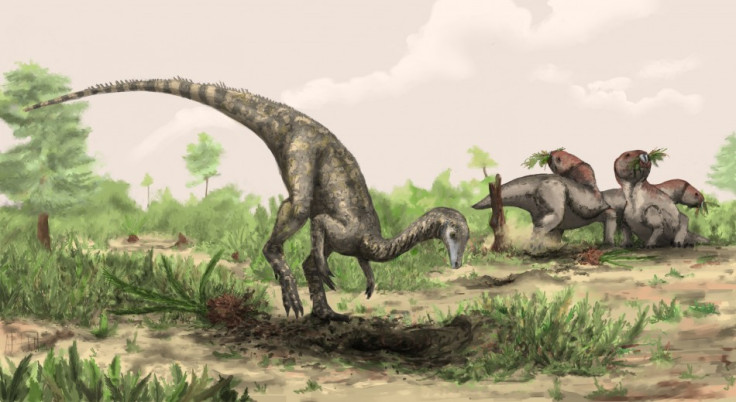World’s Oldest Dinosaur Was Size of Labrador and had Five Foot Tail

Remains of the world's oldest dinosaur have been discovered by scientists - and show that the prehistoric creatures evolved much earlier than previously thought.
Nyasasaurus parringtoni was about the size of a Labrador, standing at about one meter tall, and it had a five-foot long tail, the researchers found.
The research, published in the journal of the Royal Society, shows that the specimen is either the earliest dinosaur ever to have been found, or its closest relative.
The discovery means that the dinosaur's lineage appeared between 10 and 15 million years earlier than previously thought. The Nyasasaurus lived around 243 million years ago.
Lead author Sterling Nesbitt, from the University of Washington, said: "For 150 years, people have been suggesting that there should be Middle Triassic dinosaurs, but all the evidence is ambiguous.
"Some scientists used fossilised footprints, but we now know that other animals from that time have a very similar foot.
"Other scientists pointed to a single dinosaur-like characteristic in a single bone, but that can be misleading because some characteristics evolved in a number of reptile groups and are not a result of a shared ancestry."
The Nyasasaurus fossilized bones were found in the 1930s by Rex Parrington in Tanzania - which at the time would have been part of Southern Pangaea, a monolithic tract of land consisting of South America, Africa, Antarctica and Australia.
Fast growth
The bones were first described in the 1950s but the reports were never published. Only now have scientists been able to piece together the fossil to determine its significance.
The researchers had an upper arm bone and six vertebrae and they show characteristics common to early dinosaurs. Their bone tissue in the upper arm appears to have grown quickly, a common feature of dinosaurs.
Co-author Sarah Werning said: "We can tell from the bone tissues that Nyasasaurus had a lot of bone cells and blood vessels
"In living animals, we only see this many bone cells and blood vessels in animals that grow quickly, like some mammals or birds.
"The bone tissue of Nyasasaurus is exactly what we would expect for an animal at this position on the dinosaur family tree. It's a very good example of a transitional fossil; the bone tissue shows that Nyasasaurus grew about as fast as other primitive dinosaurs, but not as fast as later ones."
Another feature is the arm bone's enlarged crest, which was used to anchor the upper arm muscles and is common to all early dinosaurs. Researchers believe it was more closely related to birds than crocodilian-type dinosaurs.
Nesbitt said: "Nyasasaurus and its age have important implications regardless of whether this taxon is a dinosaur or the closest relatives of dinosaurs.
"It establishes that dinosaurs likely evolved earlier than previously expected and refutes the idea that dinosaur diversity burst onto the scene in the Late Triassic, a burst of diversification unseen in any other groups at that time."
© Copyright IBTimes 2025. All rights reserved.






















